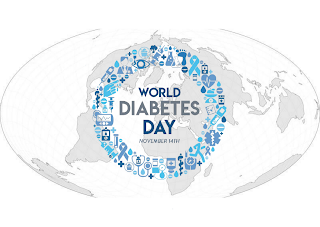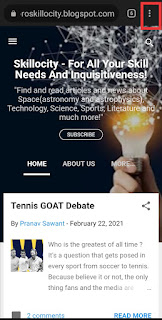Diabetes Detector Web App
Machine Learning - a concept that most people struggle to comprehend and most of them who do comprehend would have many different perceptions about it. I myself have been working on Machine Learning and its algorithms for about 6 months and after some rigorous training in Machine Learning and its subsidiary subjects such as Statistics and Linear Algebra, I've finally started to get a hold of it (even though a lot of work is yet to be done).
We launched our first native app -SkillChem- yesterday and today here we are with our first web app. This app is a diabetes detector and detects whether a particular patient has diabetes depending upon various parameters such as glucose, insulin, diabetes pedigree function etc. According to the creators of the dataset, the diabetes pedigree function scores likelihood of diabetes based upon family history of the disease. This web app is based on Machine Learning and works on the Random Forest Classifier algorithm.
We have deployed the app using Streamlit. It is an open source framework that allows data science teams to deploy web apps fairly easily. It's one of the best hosting services I've used and it's great for quick and easy deployment of web apps. The app is coded in python.
The web app uses interactive visual and graphical interpretations to display the outcome and compare the input parameters given by the user. We trained the dataset using 20% of it as our test size. The sidebar sliders help in changing the values of the parametres for determination of the result. The graphs compare the values of the patient with others ( both with diabetic and non-diabetic patients). It also provides the accuracy of the result.
For those who want to learn about Machine Learning, its applications and algorithms, Professor Andrew Ng has a great course for it on coursera. He explains about the multiple machine learning algorithms and applications in depth. It's a good course for people of all ages looking to expand their knowledge in Machine Learning. The course is completely free to study. The link for the course is : https://www.coursera.org/learn/machine-learning
This web app was a learning curve for us and has improved our knowledge about Machine learning significantly. We hope to deploy more apps in the future and share them with you. Feel free to add onto this project and don't hesitate to drop by any suggestions. The link for the diabetes detector web app is as follows :
https://share.streamlit.io/pranav-coder2005/diabetes_detector/main/diabetes_detector_app.py
About the dataset : This dataset is originally from the National Institute of Diabetes and Digestive and Kidney Diseases. The objective of the dataset is to diagnostically predict whether or not a patient has diabetes, based on certain diagnostic measurements included in the dataset. Several constraints were placed on the selection of these instances from a larger database. In particular, all patients here are females at least 21 years old of Pima Indian heritage.
The datasets consists of several medical predictor variables and one target variable, Outcome. Predictor variables includes the number of pregnancies the patient has had, their BMI, insulin level, age, and so on.
Disclaimer: This is just a learning project based on one particular dataset so please do not depend on it to actually know if you have diabetes or not. It might still be a false positive or false negative. A doctor is still the best fit for the determination of such diseases.
November is the diabetes awareness month and world diabetes day is observed on 14 November of each year. Diabetes awareness groups spread awareness about the disease throughout the month through several programs, charitable events, campaigns etc. The purpose of it is to spread awareness about this disease all around the world and to fight it together. World Diabetes Day was created in 1991 by International Diabetes Federation and the World Health Organization in response to growing concerns about the ever increasing health threat posed by diabetes. 'The Nurse and Diabetes" was the theme was World Diabetes Day in 2020. The campaign aims to raise awareness around the crucial role that nurses play in supporting people living with diabetes. The blue circle is the universal symbol for diabetes. It was launched in 2006 to give diabetes a common identity. The symbol aims to support all existing efforts to raise awareness about diabetes. Let's show our support for diabetes awareness and help many patients around the world.



Comments
Post a Comment
Comment your thoughts/doubts and we'd reply. Please be respectful